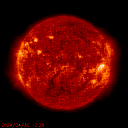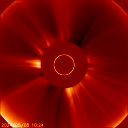|
|
Located in Bidwell Park, in Chico, California, the Kiwanis Chico Community Observatory (KCCO) is nestled within the third largest municipal park in the nation. This observatory is not unique because of its instrumentation, but because of the how it is funded and operates. The observatory is not tied to any federal or state programs, associated with any universities or institutes of higher learning. Yet, it provides free informal astronomical science education to more than 10,000 guests per year, including many migrant worker families from the surrounding agricultural areas. It is able to do so not because of a local astronomy club, but because of the Greater Chico Kiwanis Club. |
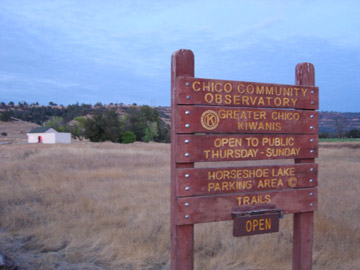 |
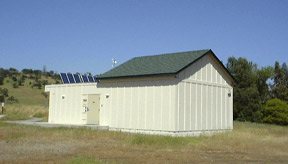 |
The observatory started as the brainchild of Kris Koenig, a former Administrator of the Kitt Peak Visitors Center. He envisioned an observatory funded by the community, for the community's use, with the underlining goal of encouraging kids to study math and science. A series of events brought Kris and the local Kiwanis Club together and three years later, in 2001, the observatory opened. Funding is strictly through donations from the general public and local businesses.
The observatory operates for free on four nights a week for the general public with the remaining three nights reserved for groups and student research. A volunteer staff of about ten, ranging in ages from 10 - 47 year of age, operates the facility, most of them high school students or young adults attending California State University at Chico. Two former docents have completed their undergraduate work in astronomy and are continuing in PhD programs. KCCO is a 22'x44' roll-off roof observatory that features two 14-inch Schmidt-Cassegrain telescopes on AstroPhysics German equatorial mounts. The main observing area is 22'x20' and can comfortably handle about 40 guests at a time. |
|
Due to the popularity of the observatory and overwhelming guest traffic, the facility is about to expand and open the world's first outdoor planetarium. The planetarium will feature a large double-tiered circular amphitheater constructed from concrete. The seating will be formed into the structure and will be angled at 45-degrees to provide comfortable viewing of sky. Docents will use green laser pointers to conduct already popular constellations tours - but the naked eye sky is not the limit. Each program participant will be provided a small wireless LCD monitor that will receive a local broadcast from the observatory control room. The broadcast content will feature live video feed from one of the observatory telescopes along with preprogram graphics and animations to help the docents teach concepts like stellar and galactic evolution. The docent will be able to remotely operate the telescope while conducting the program from the planetarium. Construction of the planetarium will begin in September 2005.
For schools, KCCO support the needs of the visiting educator, which can vary from instructor to instructor, grade level to grade level. Programs include everything from general observing at night, to making massive spectrums with mirrors and pans of water during the day and of course the ever popular dry ice comets.
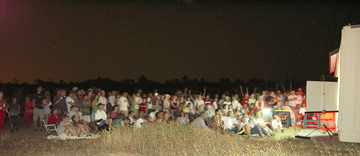
KCCO is also dedicated to solar astronomy. Every Sunday is "Solar SunDay" and the observatory features solar viewing through several instruments including a Coronado PST, double stacked to.5A, for H-alpha viewing and for white light viewing, a C-14 Schmidt-Cassegrain with Thousand Oaks Filter, and a Solarscope for viewing a projected sun. They average about 25 folks over the two hours the observatory is open. In addition to great solar views, guests receive materials from NASA's Sun-Earth Connection. Some of the guests' comments have been:
"What an excellent place to come and learn!,"
"It's great to have something like this locally."
"The sun is cool!"
Each docent has his or her way of teaching about the Sun to the students. Kris tries not to standardize how they convey the material - it just has to be factual. Most kids from about eight years old on get it. Conveying the size of the Sun is the focus of what they teach to the 8 - 14 kids. The material is expanded to covered to magnetic activity for the older kids and adults. Everyone can use the telescope controls to "drive" around the sun, which is something they really get a kick out of.
KCCO's rather unique model for development and operation has already led the way for a similar observatory being built not far away. The Cameron Park Rotary Club is currently constructing an observatory and program based on KCCO's experience. The facility is scheduled to open in the fall of 2005. KCCO is receiving some consulting fees in the process in exchange for assisting the group in the design and instrumentation of the facility along with providing fundraising strategies. They will also provide operational training once the facility is completed -- see http://www.cameronparkrotary.org/observatory.asp.
You may visit KCCO in cyberspace at http://www.chicoobservatory.com Kris Koenig's e-mail is kris[at]ngc6992.com and his phone number is (530)-321-7827.
|
|


